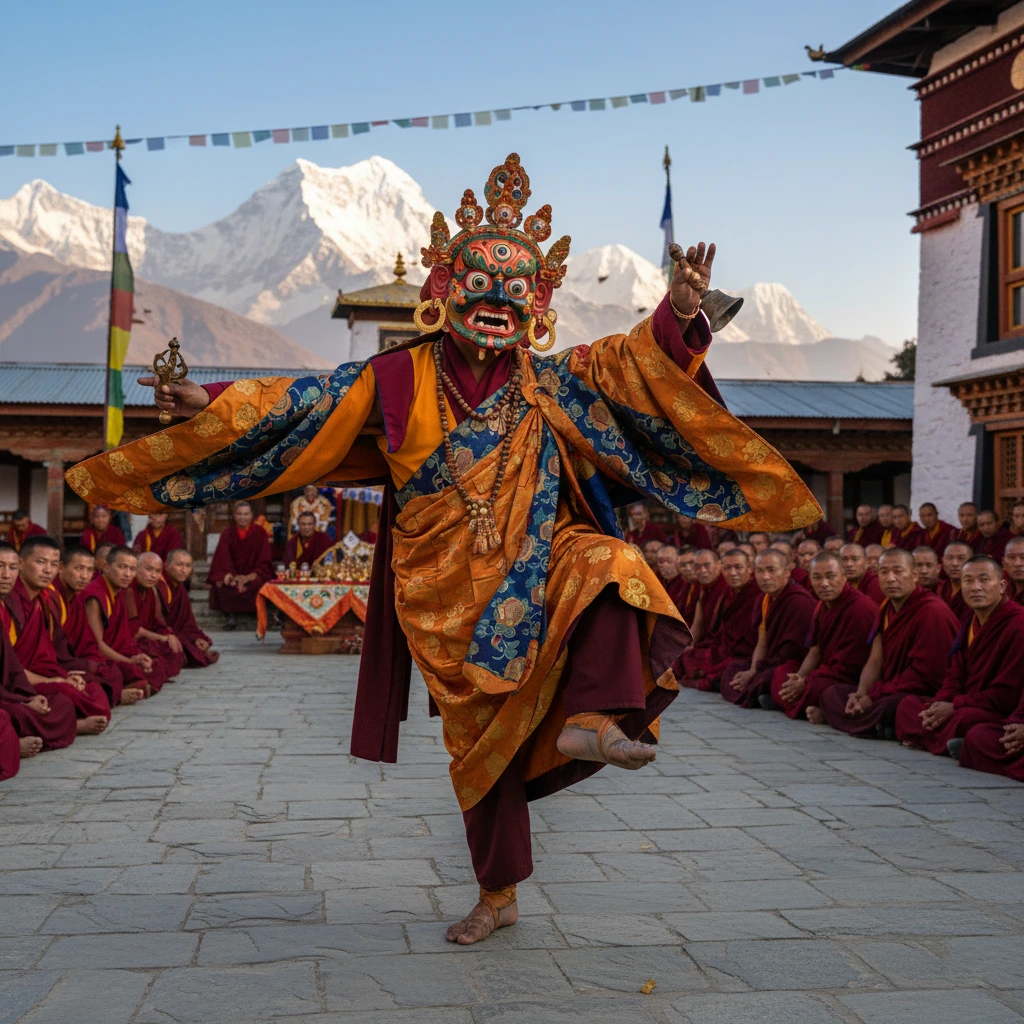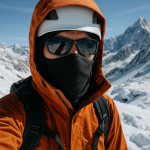Nepal Festivals & Holidays: Culture, Celebrations & Sherpa Traditions
Nepal is often described as the “land of festivals,” where it’s said there are more holidays than days in the year. These celebrations form the vibrant, beating heart of Nepali life, interweaving religion, community, and ancient traditions. For travelers, witnessing one of these Nepal festivals is an opportunity to look beyond the mountains and into the soul of the nation.
From the nationwide celebrations in Kathmandu to the unique Buddhist rituals in the high Himalayas, this guide introduces you to the most important festivals in Nepal. Understanding their meaning and timing can transform your trip into a rich cultural experience.
Major National Festivals
These are the biggest holidays in Nepal, celebrated with passion and devotion across the country. While primarily Hindu festivals, they are embraced by individuals from all backgrounds.
Dashain (September/October)
Dashain is the most important festival in Nepal. This 15-day celebration marks the victory of the goddess Durga over evil. It is a time for family reunions, flying kites, feasting, and receiving blessings (tika) from elders. For visitors, Kathmandu may be quiet during this period as many people return to their home villages.
Tihar (October/November)
Also known as the “Festival of Lights,” Tihar is a beautiful five-day festival that follows Dashain. Each day is dedicated to honoring different beings: crows, dogs (Kukur Tihar), cows, and Laxmi, the goddess of wealth. Countless butter lamps and colorful lights illuminate the nights, thus creating a truly magical atmosphere.
Nepali New Year (April)
The Nepali New Year, or ‘Nawa Barsha,’ is celebrated in mid-April according to the Bikram Sambat calendar. It’s a public holiday marked by street festivals, cultural parades, and family gatherings, especially in cities like Bhaktapur. Read about New Year traditions.
![]()
Sherpa & Buddhist Festivals in the Everest Region
For those undertaking the Everest Base Camp trek, the Khumbu region offers a chance to witness unique Everest Sherpa festivals that are deeply tied to the rhythm of mountain life and Tibetan Buddhism.
Mani Rimdu (October/November)
The Mani Rimdu festival is the most important cultural event in the Everest region. Held at the famous Tengboche Monastery, this multi-day festival features monks in elaborate masks and costumes performing sacred dances to vanquish negative forces. It is a profound spiritual experience, open to trekkers, and a highlight of the autumn trekking season.

Dumji Festival (June/July)
The Dumji festival celebrates the birth of the legendary Guru Rinpoche, who is credited with bringing Buddhism to Tibet. Celebrated in Sherpa villages like Namche Bazaar and Khumjung, it involves days of feasting, dancing, and community bonding. Although it occurs during the monsoon season, it offers a rare glimpse into Sherpa community life.
Other Important Festivals
Nepal’s calendar is packed with many other fascinating celebrations.
- Holi (March): The “Festival of Colors” is a joyous, boisterous celebration where people throw colored powder and water at each other to mark the arrival of spring.
- Buddha Jayanti (April/May): Celebrates the birth of Lord Buddha, who was born in Lumbini, Nepal. It is a peaceful day of prayer and processions, especially at Buddhist sites like Swayambhunath and Boudhanath in Kathmandu.
- Losar (February): The Tibetan and Sherpa New Year is a major festival in the Buddhist communities of Nepal, including those in the Everest region. It’s a family-focused celebration with food, drink, and traditional customs.
The Everest Connection: Puja Ceremonies
Beyond organized festivals, a vital part of the climbing culture on Everest is the Puja ceremony. Before any expedition attempts the summit, a Buddhist lama conducts this ritual at Base Camp to bless the climbers and their gear, and to ask the mountain deities for safe passage. This tradition blends ancient belief with the modern pursuit of climbing, demonstrating that even today, the mountain is approached with reverence.
Festival Calendar Overview for Trekkers
Planning your trip to align with a festival can be an incredible experience. Here’s a quick guide to what you might see during the main trekking seasons.

- Spring Trekking Season (March – May): You could catch Holi in Kathmandu before you fly to Lukla. You might also experience Buddha Jayanti or Nepali New Year.
- Autumn Trekking Season (September – November): This is the prime festival season. You could see parts of Dashain, the beautiful lights of Tihar in Kathmandu, and potentially the famous Mani Rimdu festival in Tengboche.
Traveler’s Tips for Enjoying Festivals
- Be Respectful: Always ask before taking photos of people or religious ceremonies. Dress modestly, especially when visiting temples and monasteries.
- Be Open: Don’t be shy! Locals are often happy to explain their traditions or invite you to join in the celebration. A few words in the Nepali language can go a long way.
- Be Flexible: During major holidays like Dashain, transportation can be booked up and some businesses may be closed. Plan accordingly.
- Participation: Festivals like Mani Rimdu are open to tourists, and you are welcome to watch respectfully. For Holi, you are an active participant whether you like it or not—wear old clothes!
Key Takeaways
- Nepal’s festivals are an integral part of its national and regional identity, offering visitors a deep insight into its rich cultural tapestry.
- Major national holidays include the family-centric Dashain and the beautiful festival of lights, Tihar.
- Trekkers in the Everest region have the unique opportunity to witness Sherpa Buddhist festivals like Mani Rimdu at Tengboche Monastery.
- Planning your visit to coincide with a festival can elevate your trip from a scenic adventure to a profound cultural experience.
Frequently Asked Questions (FAQ)
What is the biggest festival in Nepal?
Dashain, typically celebrated in September or October, is the biggest and longest Hindu festival in Nepal. It is a major holiday focused on family gatherings, feasts, and the victory of good over evil. For many Nepalis, it is the equivalent of Christmas in terms of cultural significance.
When is Mani Rimdu celebrated?
The Mani Rimdu festival is celebrated in the autumn, usually in October or November, according to the Tibetan lunar calendar. The most famous celebration takes place at Tengboche Monastery in the Everest region, making it an incredible cultural highlight for trekkers on the Everest Base Camp trail during that time.
Which festivals can I see during the Everest Base Camp trek?
If you trek in the autumn season (September-November), you have a high chance of witnessing the Mani Rimdu festival at Tengboche. You might also see the tail end of Dashain celebrations or the beginning of Tihar in the lower valleys and Kathmandu. During the spring season (March-May), you could experience Holi (the festival of colors) in Kathmandu before your trek, or Buddha Jayanti.
Is Dashain like Christmas?
Yes, in many ways, Dashain is culturally similar to Christmas in the West. It is the most important family holiday of the year, where people travel across the country to be with their relatives, exchange gifts and blessings, and share large feasts. Both are central to their respective cultural calendars.

Daniel Whitaker is a mountain journalist and lifelong climber with over 15 years of experience in the European Alps and the Andes. Although he has not yet attempted Mount Everest, he has summited several 6,000-meter peaks in South America and multiple classic alpine routes in the Mont Blanc massif. Daniel specializes in writing about the culture, history, and psychology of mountaineering. His work combines first-hand mountaineering experience with extensive research on Himalayan expeditions, making him an engaging guide to Everest’s enduring myths, records, and inspirational quotes.
